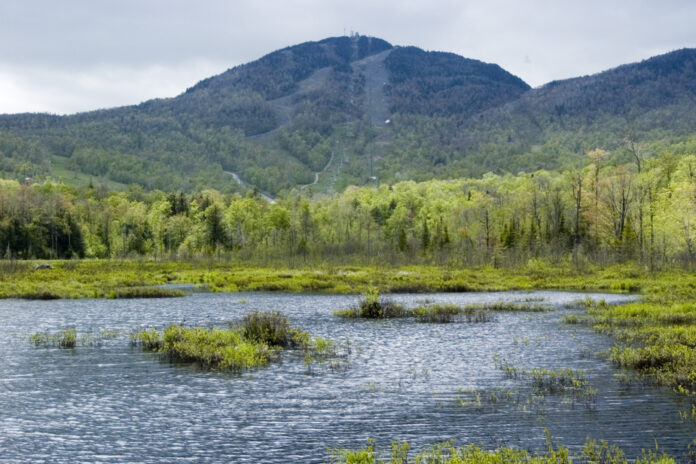The Quebec government is considering the expansion of Mont-Orford National Park, and the information document that the Ministry of the Environment, the Fight against Climate Change, Wildlife and Parks (MELCCFP) has prepared for this subject has enough to make the mouth water.
The project has a convoluted history to say the least. In the early 2000s, the manager of the alpine ski center and the golf course proposed a land exchange to allow the construction of hundreds of accommodations at the foot of the slopes: it was a question of extracting this space from the park and compensate for this loss of territory with land located outside the current limits of the park. Faced with outcry, the project was abandoned.
But the idea of expanding the park remained.
A long hiking trail, developed by Les Sentiers de l’Estrie, crosses what would become the new sector of the park. The MELCCFP promises to maintain it and integrate it into its network of trails. However, it will be necessary to move certain sections to protect the habitats of precarious species or “highlight points of interest in the territory”.
The new park will also incorporate other trails developed by Les Sentiers de l’Estrie, such as those that climb Mount Cathedral and Mount Three Lakes as well as the one that explores the Gulf Creek Valley.
Currently, some of these trails must close during hunting season. Since hunting is not permitted in national parks, these trails may remain open throughout the fall, probably the best season for hiking.
The Department would make some changes, possibly adding observation towers “if the receiving environment permits,” the backgrounder writes.
The territory targeted by the expansion includes a very popular climbing wall, the La Rouche wall, officially opened in 2010. The government is committed to preserving it. He also proposes to reopen the wall of Mont-des-Trois-lacs, a site closed around 1997-1998 because climbers did not respect an agreement concluded a few years earlier with the owner.
According to a 1995 topoguide, the site includes 38 routes for top roping, sport climbing (with fixed anchors) and traditional climbing (with removable protections).
The Ministry would not consider reopening a third wall, that of Lac Brais: the number of routes is limited there and the height of the wall does not exceed 15 m, which limits its appeal for climbers.
For cycling, we are considering a bicycle link that would connect the new sector to the rest of the park as well as a network of mountain bike trails. It would be about twenty kilometers of trails, of all levels, which would exploit “the technical aspect of the terrain”, namely rocks and rocky outcrops.
For water activities, a boat rental center is planned in the Brompton Lake marsh and south of Lake Montjoie, with washing stations for personal watercraft.
But there will be no way to go sailing on Lake La Rouche: the owner, the Bombardier family, still refuses to sell the property even if the lake and its banks would be completely enclosed in the new sector of the park.
Finally, the government proposes the creation of a campground with services of 200 places in an area that is no longer natural, a former quarry located on chemin J. -A.-Bombardier. There should also be about twenty Echo-type cabins at the new campground and south of Lake Montjoie, as well as rustic huts and campgrounds, mainly along the long-distance hiking trail.
The Ministry submitted the expansion project to the Bureau d’audiences publiques de l’environnement (BAPE), which held a series of hearings in mid-February and early April. Quebec could grant national park status to the new area in April 2025, but it would take until 2034 for the entire project to be completed.
Black and white images, a dreamy version of Sound of Silence, an elegant video by Emil Johansson.
It is the percentage of the Quebec population that lives in urban areas. To combat the nature deficit, there is nothing like outdoor activities.








